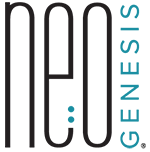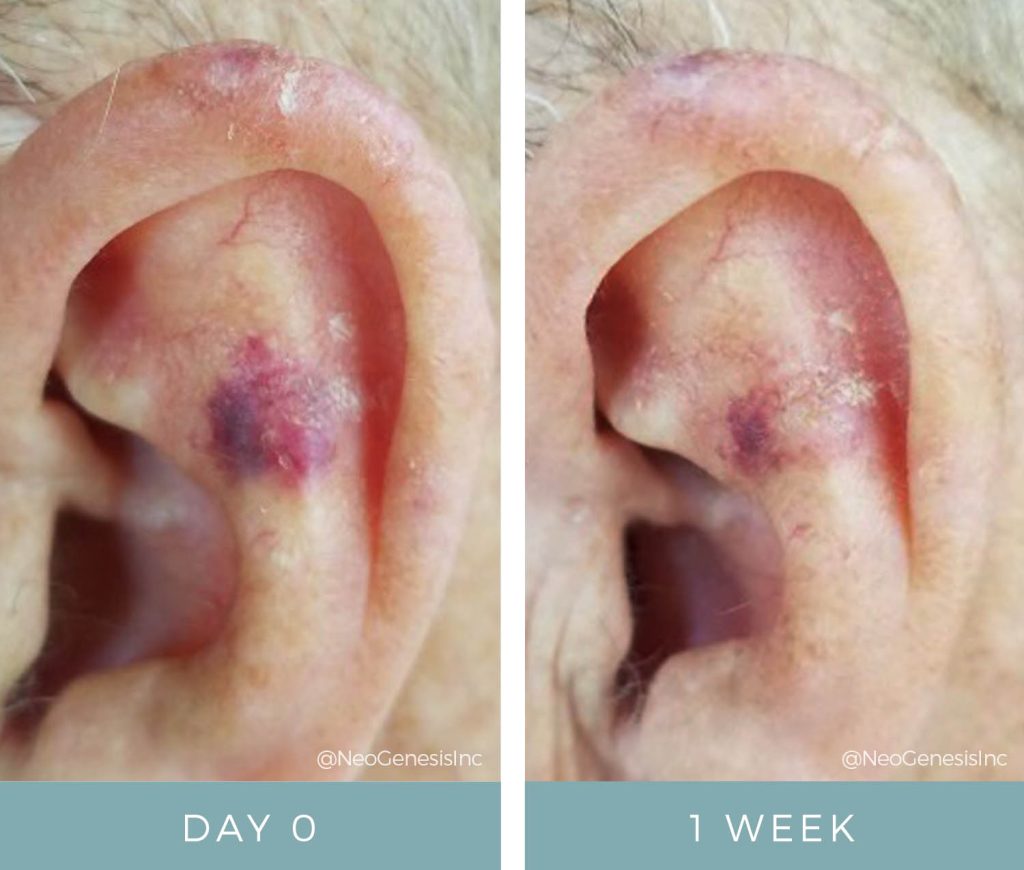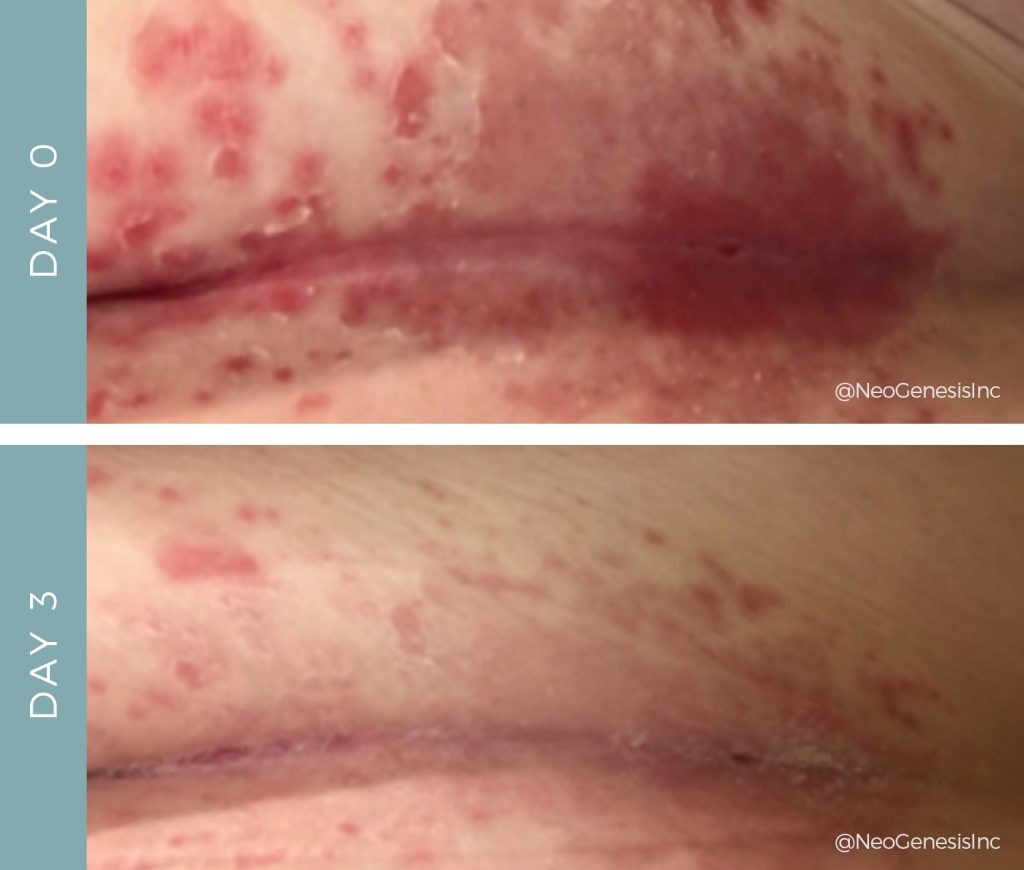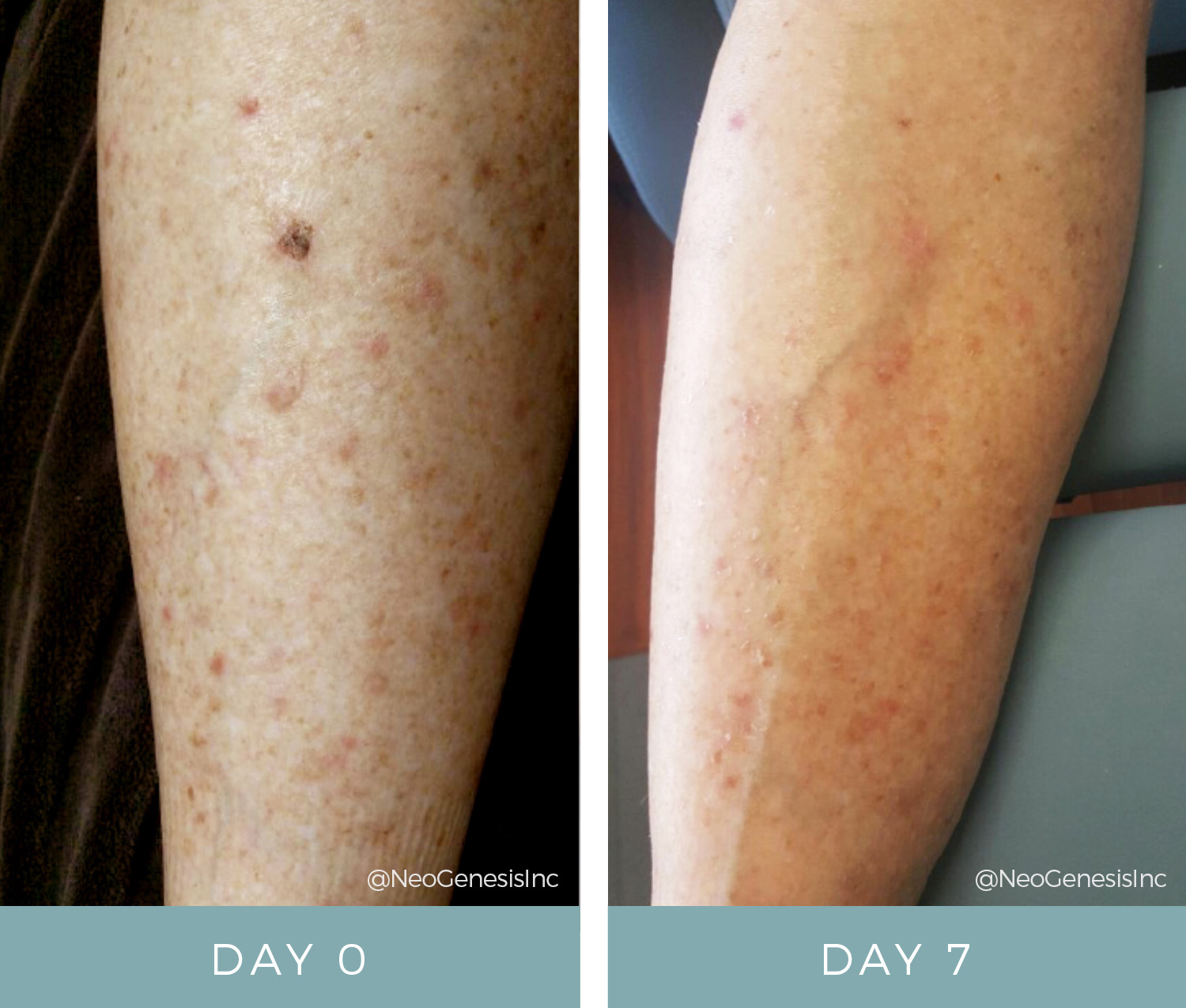Chemotherapy Rash
Treatment + Photos Courtesy of Professional Partner
Tracy Lacina, Skin Deep Salon & Spa

“I had a severe skin reaction from two powerful chemotherapy drugs (Adriamycin/Cytoxan) that were administered every other day for four weeks. The worst reaction was on my legs which had raised red areas and many of these were blisters. We had tried Calendula Oil by Bodyceuticals. The rash would subside and then come back worse than before. Tracy introduced me to NeoGenesis Recovery serum. I applied it twice a day to the affected areas. In one week, I had a huge improvement. The redness faded, the raised areas diminished, the blisters went away, and the itching stopped. Recovery serum is my holy grail. I highly recommend it to anyone with skin issues from chemo.” – Charlotte P.
FEATURED VIDEOS
CHEMOTHERAPY RASH
Chemotherapy is a common treatment for cancer, and while it can be life-saving, it often comes with a variety of side effects. One side effect seen in many patients undergoing chemotherapy is skin rashes.
Adriamycin (doxorubicin) and Cytoxan (cyclophosphamide) are two powerful chemotherapy drugs used in various types of cancer treatment. While these drugs work to attack cancer cells, they can also damage healthy cells in the body, including skin cells. As a result, patients may experience different types of skin rashes.
One type of rash that can occur as a side effect of chemotherapy is called erythrodermic rash. This type of rash appears on large areas of the body and can be red, itchy, and painful. It may also cause the skin to become scaly or peel off in some cases. This type of rash is typically treated with topical corticosteroids or antihistamines.
Another common type of rash seen with chemotherapy is called acneiform rash. This type of rash looks like small, red bumps similar to acne and can occur on the face, neck, and upper body. Acneiform rashes are treated with topical antibiotics or oral antibiotics if they become infected.
It is important for patients undergoing chemotherapy to keep their skin clean and moisturized to help prevent rashes from developing. They should also avoid using harsh soaps or perfumed products on their skin. NeoGenesis skin care products deliver nutrient-rich molecules to the affected areas to help rejuvenate and protect your skin. Our solutions are designed to provide lasting comfort and relief without causing further irritation or discomfort.
Treatment + Photos Courtesy of Professional Partner
Tracy Lacina, Skin Deep Salon & Spa

“I had a severe skin reaction from two powerful chemotherapy drugs (Adriamycin/Cytoxan) that were administered every other day for four weeks. The worst reaction was on my legs which had raised red areas and many of these were blisters. We had tried Calendula Oil by Bodyceuticals. The rash would subside and then come back worse than before. Tracy introduced me to NeoGenesis Recovery serum. I applied it twice a day to the affected areas. In one week, I had a huge improvement. The redness faded, the raised areas diminished, the blisters went away, and the itching stopped. Recovery serum is my holy grail. I highly recommend it to anyone with skin issues from chemo.” – Charlotte P.
FEATURED VIDEOS
CHEMOTHERAPY RASH
Chemotherapy is a common treatment for cancer, and while it can be life-saving, it often comes with a variety of side effects. One side effect seen in many patients undergoing chemotherapy is skin rashes.
Adriamycin (doxorubicin) and Cytoxan (cyclophosphamide) are two powerful chemotherapy drugs used in various types of cancer treatment. While these drugs work to attack cancer cells, they can also damage healthy cells in the body, including skin cells. As a result, patients may experience different types of skin rashes.
One type of rash that can occur as a side effect of chemotherapy is called erythrodermic rash. This type of rash appears on large areas of the body and can be red, itchy, and painful. It may also cause the skin to become scaly or peel off in some cases. This type of rash is typically treated with topical corticosteroids or antihistamines.
Another common type of rash seen with chemotherapy is called acneiform rash. This type of rash looks like small, red bumps similar to acne and can occur on the face, neck, and upper body. Acneiform rashes are treated with topical antibiotics or oral antibiotics if they become infected.
It is important for patients undergoing chemotherapy to keep their skin clean and moisturized to help prevent rashes from developing. They should also avoid using harsh soaps or perfumed products on their skin. NeoGenesis skin care products deliver nutrient-rich molecules to the affected areas to help rejuvenate and protect your skin. Our solutions are designed to provide lasting comfort and relief without causing further irritation or discomfort.







